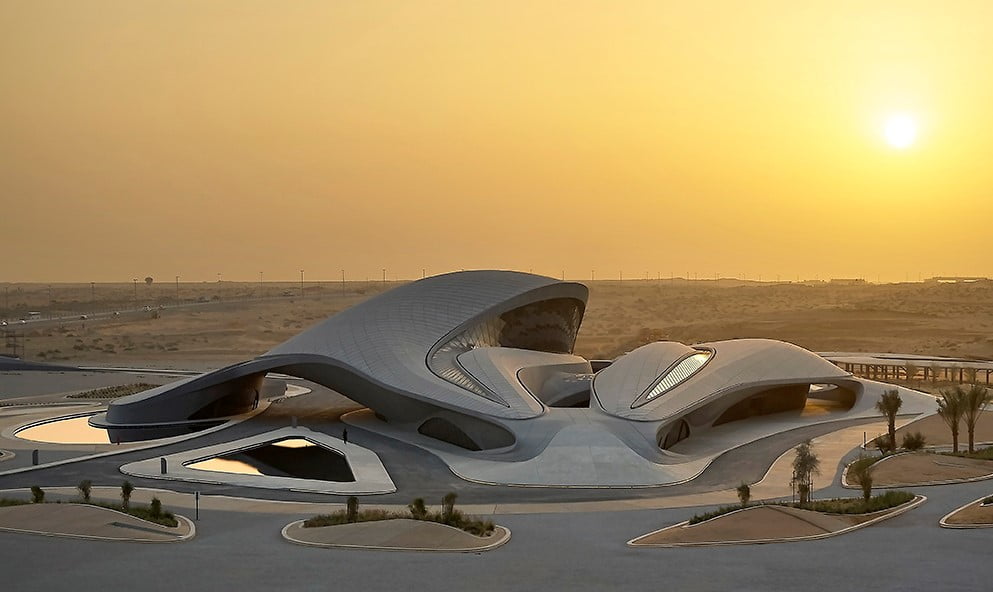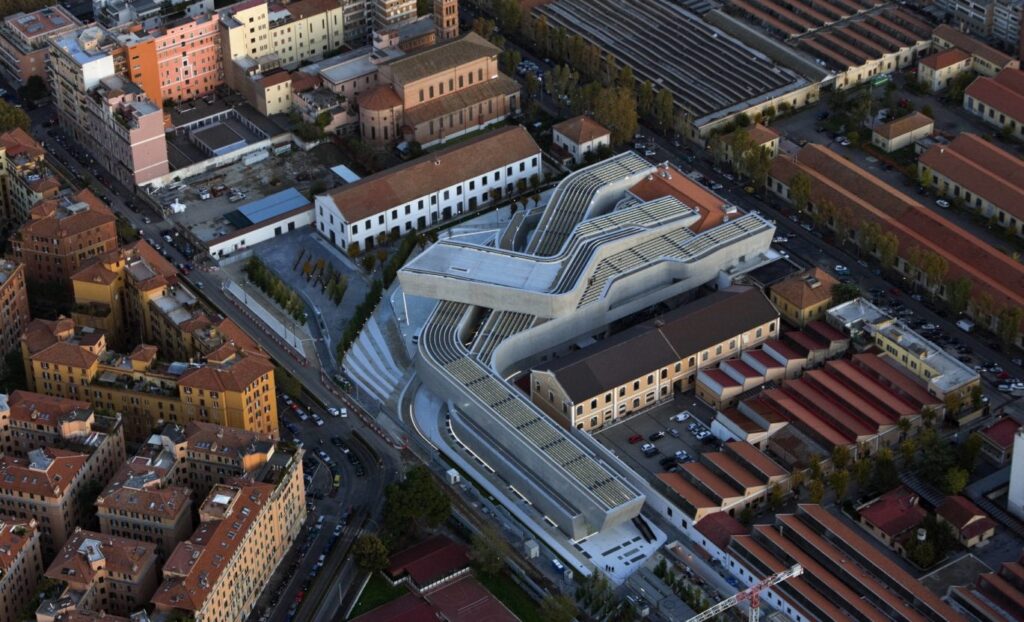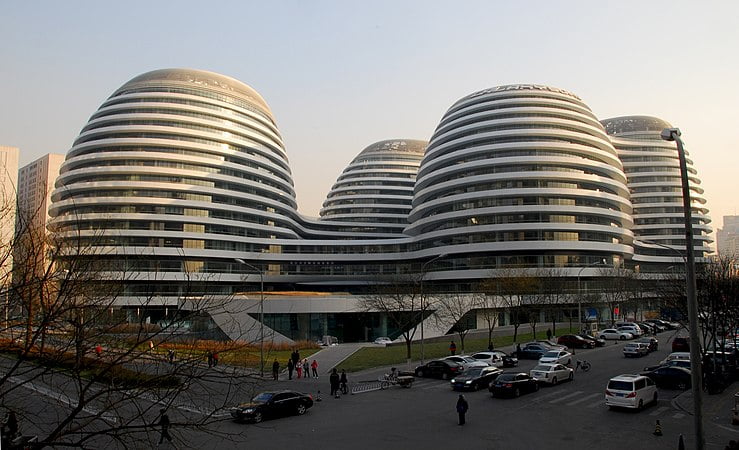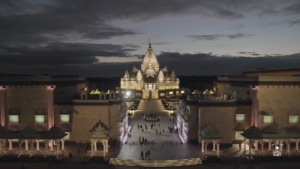Zaha Hadid, a name we architecture students always take with honor. She is often known as “The Queen of Curves”. In her architecture career, she has never used a 90° angle in any of her projects. Forbes magazine named her one of the 100 most powerful women in the world and the Japan Art Association presented her with the ‘Praemium Imperiale’. Her daring and unconventional buildings tiptoe a line between fantasy and reality, changing our understanding of what architecture can do. Her accomplishments were so constant that she garnered the greatest distinctions from civic, intellectual, and professional organizations all around the world. In 2004, she became the first woman architect to receive the most prestigious award, the “Pritzker Prize.”
Each of her projects redefined what is possible in concrete, steel, and glass by fusing her unrelenting optimism for the future and confidence in the power of creativity with sophisticated design, material, and construction advances.
What do you think? Why are Zaha Hadid’s buildings so extraordinary? What influenced her signature style? If you’d like this type of blog, then share it with your friends and tell us which topic you want to read next from architecture.
Early Life
Zaha Hadid was born on October 31st, 1950, in Baghdad, Iraq. She belonged to a wealthy family. Her father was a well-known industrialist, and her mother was an artist from Mosul. She had one brother, Foulath Hadid, who was a writer, accountant, and expert in Arab affairs. For schooling, she joined boarding schools in England and Switzerland in the 1960s. She attended high school and, after completing a bachelor’s degree in mathematics from the American University of Beirut, Lebanon. She moved to London in 1972 to study at the Architectural Association (AA) School of Architecture, where she received her diploma in 1977.
Hadid started her career as a professor at the Architectural Association School of Architecture, London, and taught there until 1987. She has held various chairs and guest professorships at institutions all over the world, including Columbia University, Harvard Graduate School of Design, Cambridge University, the University of Chicago, the Hochschule Fur bildende Kunste, the University of Illinois, and the Vienna University of Applied Arts. In 1979, she founded Zaha Hadid Architects in London. Zaha Hadid was unmarried and had no children. [1] [2]
Unfortunately, we lost her on March 31, 2016. She died of a heart attack at the age of 65. She was admitted to Mount Sinai Medical Center, Miami, for the treatment of bronchitis when we heard this news. It was confirmed by a statement issued by her firm. [2]
Recognition
Hadid’s first work engaged with the Russian avant-garde movement, notably Kazimir Malevich and Vladimir Tatlin. Their work inspired her to adopt painting as a design tool, liberating herself from the conventions of architectural drawing, which she found to be limiting. For Hadid, there were no boundaries between architecture, art, and design. She revisited the work of Malibuk in a new, dynamic way, translating his geometric abstract art into actual buildings. During the early 1980s, Hadid introduced the architectural world to this new style through her radical and experimental designs, characterized by abstraction, fragmentation, and movement. Although widely published in architectural journals, these early ambitions were never realized. One of them included a plan for the Peak, a ledger center in Hong Kong.
A horizontal skyscraper formed by different layers of shard-like panels appeared to hover at a diagonal down the hillside site. Although left incomplete, the project represented a significant breakthrough in Hadid’s career, bringing her international recognition.
Despite creating her architectural firm, Zaha Hadid Architects, it was not until 1993 that Hadid’s first project was realized. This was the Vitra fire station in Viola, Rhine, Germany. The world could finally see her imagination come to life. In a brick and mortar structure, visitors can see the superposition of razor-sharp geometric planes, fragmentation, dynamic stream of movement, and multi-viewpoint perspective.
About Firm Zaha Hadid Architects
Zaha Hadid Architects is a worldwide-famous architectural firm that was founded by Zaha Hadid in 1989 in London, England. After the passing of Zaha Hadid in 2016, this firm is led by the principal and chairman, Patrik Schumacher. This firm is associated with all types of work at all scales and in all sectors. They create transformative cultural, corporate, residential, and other spaces with innovative forms, shapes, and avant-garde designs. The firm runs with a family of 450+ staff across 44 nations, and they have managed to finish over 950+ projects in the past 44 years. This firm has earned acclaim for its distinctive architectural style, characterized by fluid forms, organic shapes, and futuristic aesthetics. [1]
The journey of the firm started in London, followed by an office in Beijing, China. This firm worked on several projects in the initial years, but they were not associated with famous projects until 1993. Hadid was invited by Rolf Fehlbaum to design a small fire station for his factory. The design of the fire station was praised by everyone, and before its construction, it was featured in architecture magazines. This design became a launching pad for herself and for the firm. After this, this firm worked on various projects across the globe and defined themselves as experienced professionals who work with passion and commitment.
Some of the notable projects are: Bridge Pavilion in Zaragoza, Spain; Maxxi Museum in Rome, Italy; Guangzhou Opera House in Guangzhou, China; Heydar Aliyev Center in Baku, Azerbaijan; Galaxy SOHO in Beijing, China; London Aquatics Centre, London, England; and several others. [2] Many of their buildings are featured in various architectural magazines and websites. This firm has over 60+ on-going projects in 28 countries. [1]
ZHA’s CODE
Zaha Hadid Architects has a particular team or group named CODE, co-founded by Shajay Bhooshan. It is ZHA’s computational design research group that works on form development, geometric calculations, and bringing shape and design into reality with 3D modeling. CODE has made key contributions to computational platforms, talent development, and architectural design. [1]
Design Philosophy and Ideology
Zaha Hadid’s design philosophy was a testament to her unwavering commitment to innovation and pushing the boundaries of architectural expression. Her approach was the concept of fluidity, as evidenced by the dynamic curves and organic forms that defined her work. By embracing parametric design, she harnessed cutting-edge digital tools to create intricate geometries and forms that defied traditional architectural constraints. Yet, amidst this avant-garde aesthetic, Hadid remained deeply attuned to context, ensuring that her designs harmonized with their surroundings while making a bold architectural statement. Collaborative by nature, she engaged with interdisciplinary teams to realize her vision, demonstrating a keen understanding of the symbiotic relationship between architecture, engineering, and art. Beyond mere aesthetics, Hadid’s architecture was driven by a profound social consciousness, seeking to create inclusive, sustainable spaces that enriched the lives of their occupants and contributed meaningfully to the urban fabric.
In essence, Zaha Hadid’s design ideology transcended the realms of convention, leaving an indelible mark on the architectural landscape and inspiring generations to come. As for her team, they do have the same vision and ideology. They say that when they design, they love our time and want to imbue it with dynamism and complexity in contemporary network society. They don’t just operate on an urban and architectural scale; they also go to the interior scale, even all the way down to the furniture and product design. Their vision is to create a built environment that has the same cohesion and intercity as nature. [1]
Become an icon
Later, her work turned more curvaceous, fluid, and sculptural. But the fundamentals of the style expressing the Vitro Fire Station remained. She continued to distort form space in perspective, play with fragmenting and interpenetrating forms, and explore dynamism and movement in architecture.
With Hadid, it has always been about innovation and pushing boundaries. In one of her early interviews, Zaha said: “I almost believe there was such a thing as zero gravity.” I now believe that buildings can float. The digital age allowed her to create architectural designs that could float, slide, and move. Zaha Hadid’s work has been the focus of highly lauded exhibits at the Solomon R. Guggenheim Museum in New York in 2006, the Design Museum in London in 2007, the State Hermitage Museum in Saint Petersburg in 2015, and the Serpentine Galleries in London in 2016.
Hadid was one of the early adopters of a fully digitized 3D design process, which helped her intensify her experiments. Revolving around dynamism and fluidity, Hadid has faced many criticisms during her career, especially for her lack of interest in optimizing space and functionalism. Regardless, she refused to curb her digitization. She continued to create extravagant buildings that radically expanded the possibilities of architecture. Her last work before her death in 2016 was The Port House in Antwerp, Belgium.
Zaha Hadid created architectural shapes that no one thought possible. Through her extraordinary body of work, she has broadened the horizons of what is possible in architecture and inspired new architectural thinking and processes. Despite her death, Zaha Hadid’s vision lives on. Through her firm, Zaha Hadid Architects, she ensures that future generations will be able to enjoy her artistic vision for years to come.
Why Zaha Hadid is known as the “Queen of Curve”
Zaha Hadid was honored as “Queen of Curve” by The Guardian, a British daily newspaper. She was given this title because of her work in the field of architecture. She liberated architectural geometry by giving it a whole new expressive identity and mastering organic forms, fluids, shapes, and materials. During her diploma, her professors described her as the most outstanding pupil they had ever taught. She was called the inventor of 89 degrees. She never used 90 degrees while designing any form or building. [2] The way she was working and designing at that time was amazing. She says that there are so many terrains and territories in architecture that are yet to be explored, so why restrict ourselves? [1]
Throughout her illustrious career, Hadid consistently defied rigid geometric conventions, opting instead for sweeping curves and sinuous lines that imbued her structures with a sense of movement and dynamism. This signature aesthetic, characterized by undulating surfaces and seamless transitions, became synonymous with her work and set her apart as a visionary architect.
Awards and Honors
In 2004, she became the first female architect to receive the most prestigious award, the “Pritzker Prize.” Forbes listed her as the ‘World’s Most Powerful Women’, and the Japan Art Association presented her with the ‘Praemium Imperiale’. In 2010 and 2011, the Royal Institute of British Architects awarded her the Stirling Prize for her designs, one of architecture’s highest honors. Other honors include UNESCO’s designation of Hadid as an Artist for Peace; the Republic of France’s award of the Commandeur de l’Ordre des Arts et des Lettres; and TIME magazine’s selection of her as the world’s top thinker in 2010. In 2012, Queen Elizabeth II named Zaha Hadid a Dame Commander of the Order of the British Empire, and in February 2016, she earned the Royal Gold Medal, making her the first woman to be personally given the Royal Gold Medal.
She and her firm have been awarded more than 500+ awards till now from across the globe.
Famous Buildings
- Ordrupgaard Art Museum, Copenhagen, Denmark
- Vitra Fire Station, Weil am Rhein, Germany
- MAXXI Museum, Rome, Italy
- Guangzhou Opera House, Guangzhou, China
- Bridge Pavilion, Zaragoza, Spain
- Guangzhou Opera House, Guangzhou, China
Contact Info.
Address: Zaha Hadid Architects, Studio London, 101 Goswell Road, London, United Kingdom
Mobile: +44 20 7253 5147
Fax: +44 20 7251 8322
Email: [email protected]
Website: https://www.zaha-hadid.com/
Instagram: @zahahadidarchitects
There are 360 degrees so why to stick to one?
I don’t think that architecture is only about shelter. It should be able to excite you, to calm you, to make you think…
Ar. Zaha Hadid
I see her as “imagination and inspiration doesn’t have any boundaries”. What do you guys like about her? Tell me in the comment below.













One Response
Hey people!!!!!
Good mood and good luck to everyone!!!!!